Estimated reading time: 9 minutes
In theory, a home vegetable garden does best when in full sunlight. Many of the veggies that we all love to eat thrive under a hot sun and warm temperatures.
However, it can be hard to find a garden spot that gets a lot of sun when living in different areas. Some homes are surrounded by tall trees and neighbor’s houses while other country homes have outbuildings or livestock where the garden could go.
Many cool weather vegetables actually love being in the shade, and the best part is that you can plant them in early spring or mid-fall to get twice the harvest. Learn more about these vegetables that grow in the shade to boost your homegrown meals and bring in a bountiful harvest.
Want to save this post for later? Click Here to Pin It On Pinterest!
Brassica Family
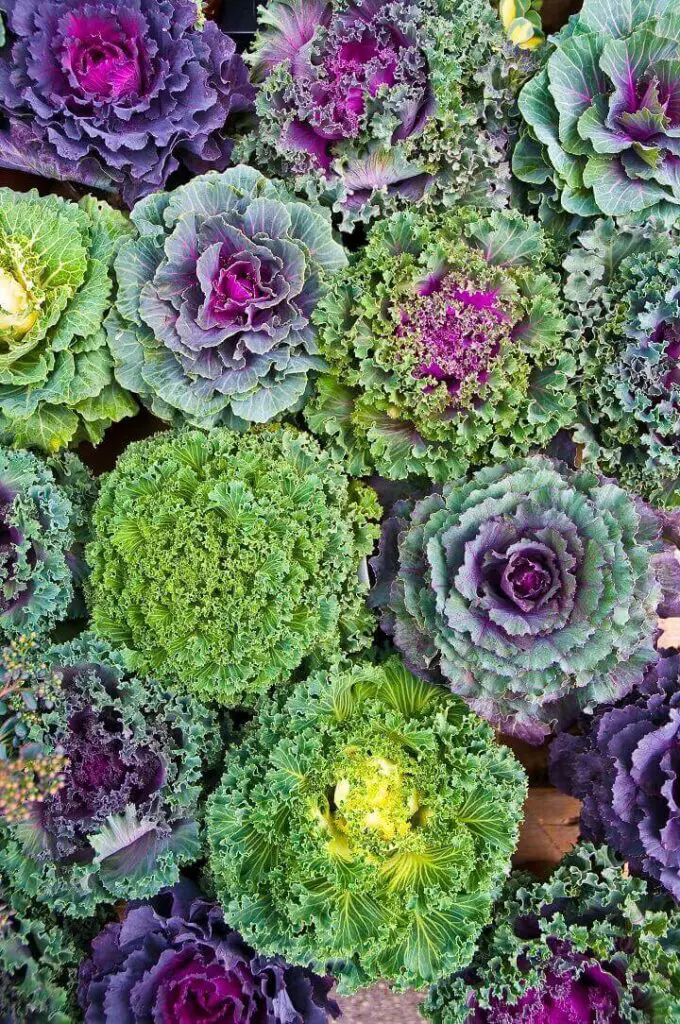
While you may not be familiar with the name of this vegetable family, we bet that you enjoy many of these shade-loving vegetables on your table.
1. Broccoli
Growing your own broccoli makes you feel like a real homesteader (or is that just me?). Seeing the broccoli heads pop up in the middle of the plant feels like quite the accomplishment.
Broccoli thrives in cooler weather and will quickly wilt at the sign of hot temperatures. Cut off the heads when they are tight and definitely before the plant tries to flower.
2. Cabbage
There are plenty of cabbage varieties to choose from to add to your salads or make a garden-fresh coleslaw. When planting cabbage in shaded areas, try the Chinese cabbage that has a looser head form than others. Growing a cabbage variety with a solid or tighter growth pattern could cause formation issues.
3. Cauliflower
Widely known for its white color, cauliflower actually requires shade to keep its head from discoloring. Cauliflower needs a shady spot either in the garden or in a darker flower bed to produce.
Choosing a self-blanching variety will help keep the cauliflower head white for a beautiful vegetable with a lot of crunch. Consider planting other colors of cauliflower as well.
4. Kohlrabi
This unique vegetable, often resembling a space-age turnip, is a fantastic addition to the Brassica family lineup for shade-tolerant plants. Kohlrabi can be grown in partial shade, where it develops its distinctive bulbous stem above ground.
Ideal for cooler weather, it can be harvested when the bulbs reach the size of a tennis ball. Its mild, sweet flavor makes it versatile in the kitchen, perfect for eating raw in salads, or cooked in stews and stir-fries.
Leafy Green Family
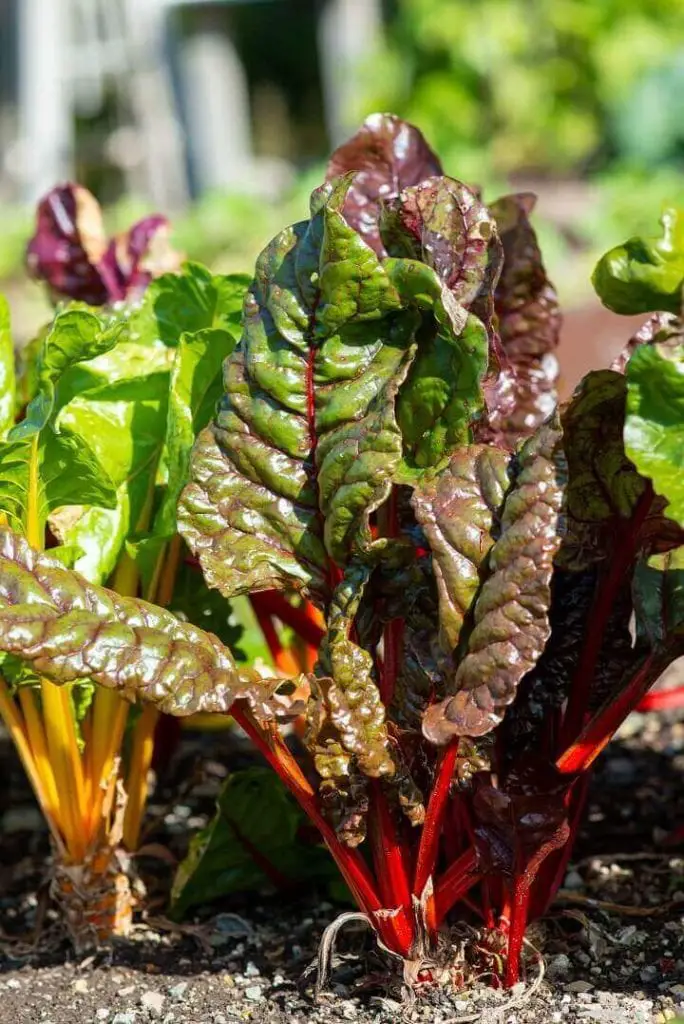
Leafy greens are the easiest to grow and can handle quite a bit of shade.
5. Arugula
This peppery-flavored green variety is the star of many salads. Arugula takes advantage of shady spots and can be harvested anywhere between 20-40 days after planting. Snip off outer leaves that are a few inches long as you need them.
6. Green Leaf
Many homeowners use green leaf lettuce in their salads or lettuce wraps to add one more vegetable serving to their diets. Green leaf lettuce is easy to plant with tiny seeds and can be harvested whenever you feel like a fresh salad.
7. Kale
The recent star of the leafy green family is kale, as it has been all over social media and menus. Kale enjoys cooler temperatures and shade as it grows easy-to-spot curly leaves. Harvest young leaves for the best flavor and try the recent craze of making healthy kale chips for a tasty snack.
8. Mustard Greens
A spicy addition to the leafy green family, mustard greens thrive in shaded gardens, bringing a peppery kick to dishes. They prefer cool temperatures and can be planted in early spring or fall.
Mustard greens grow quickly and can be harvested as baby greens for a milder flavor or left to mature for a more potent bite. They're perfect for adding a zesty twist to salads, sandwiches, or wilted into soups and sautés.
9. Spinach
Used in plenty of salads, side dishes, and even smoothies, spinach is a common vegetable that grows in the shade. In fact, it prefers cooler weather so much that it will quickly go to seed at the first sign of heat. Keeping spinach in a shaded spot allows you to extend its growing season by keeping it cooler.
10. Swiss Chard
This beautiful lettuce variety features dark green or red leaves with beautifully colored stalks. Swiss Chard is growing in popularity with its mix of spinach leaves and beet colors.
Legume Family
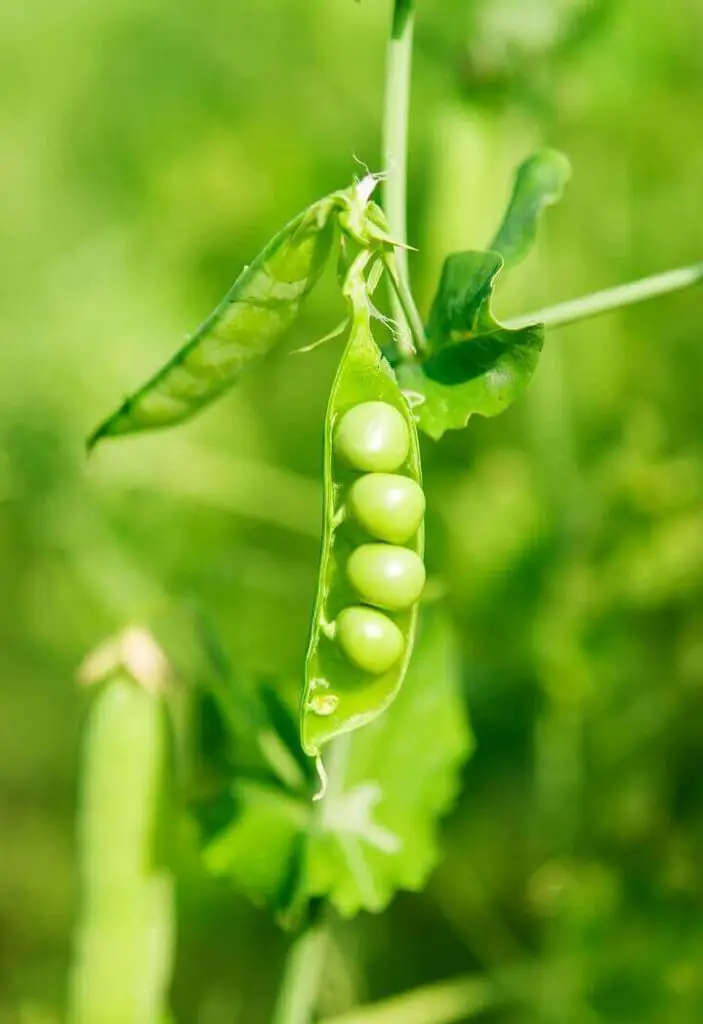
The bean, or legume, family of vegetables includes a few shade-loving options for homesteaders.
11. Bush Beans
Consider planting bush beans instead of pole beans in shadier areas of the garden. Bush beans seem to do better with partial shade, whereas pole beans require more sun to grow vertically.
Harvest bush beans when the beans are visible, and make sure to check under leaves as the beans like to hide. Smaller beans will be tender, while larger ones can get tough.
12. Fava Beans
Fava beans, also known as broad beans, are a robust legume that can tolerate partial shade, making them an excellent choice for cooler, shaded gardens. These beans prefer the cooler temperatures of early spring and fall.
They produce large, distinctive pods that contain sweet, tender beans ideal for a variety of dishes, from fresh salads to hearty stews. Support them with stakes or a trellis as they can grow quite tall and harvest when the pods feel full and plump.
13. Peas
This cool-season vegetable is a staple for many homesteads. Peas are fun to grow with their climbing vines and crunchy pods.
Plant peas next to a fence, trellis, or partially shaded structure where they can easily grab hold as they grow vertically. Harvest when the pods are young for a tender and tasty treat.
Onion Family
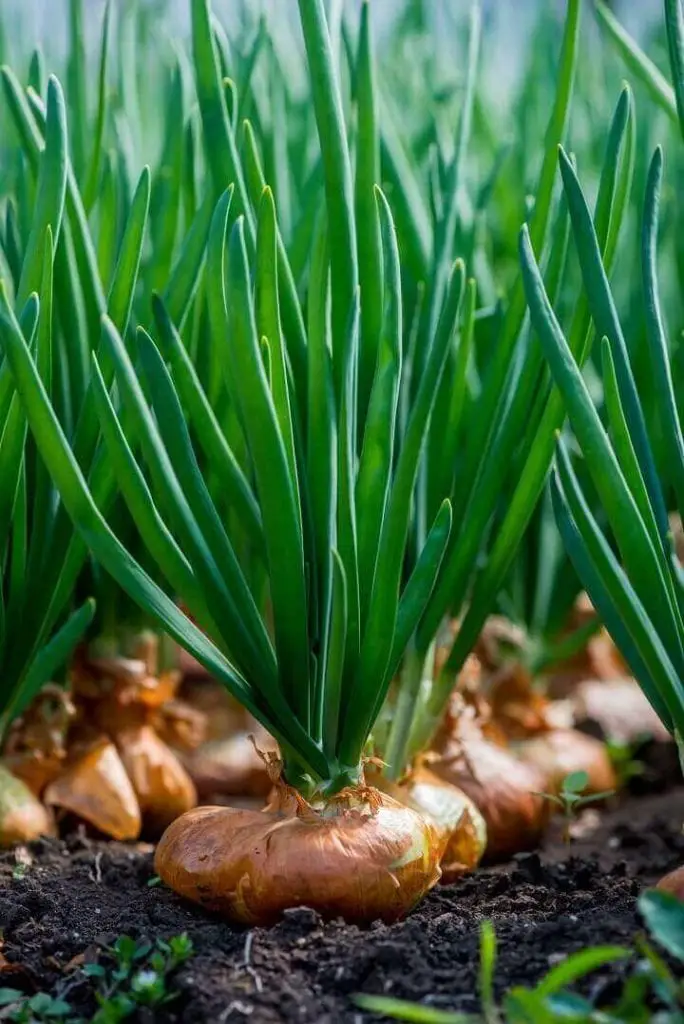
While many of the onions that we use on a daily basis love the sunshine, there are a few varieties that tend to better in cooler weather or shade.
14. Garlic
While garlic typically enjoys the sun, it can successfully grow in areas of your garden that receive partial shade, especially if sunlight is available for part of the day. Plant garlic cloves in the fall for a summer harvest, or early spring for late summer to fall harvest.
Garlic requires patience, as it takes several months to mature, but the reward of fresh garlic bulbs, far superior to store-bought ones, is well worth the wait.
15. Leeks
Described as a milder and sweeter version of onions, leeks are becoming a staple in many grocery stores and home gardens. Harvest the leaves when the stalk is about 0.5” in diameter for the best taste. Cut and clean leeks to add to soups or stews as well.
16. Scallions
Also known as bunch onions or green onions, scallions are a mild onion variety best used to spice up meals. Plant them in a partially shaded area and harvest early for a mild flavor. Cut scallions in small pieces to use as a garnish on salads or potatoes.
Root Crop Family
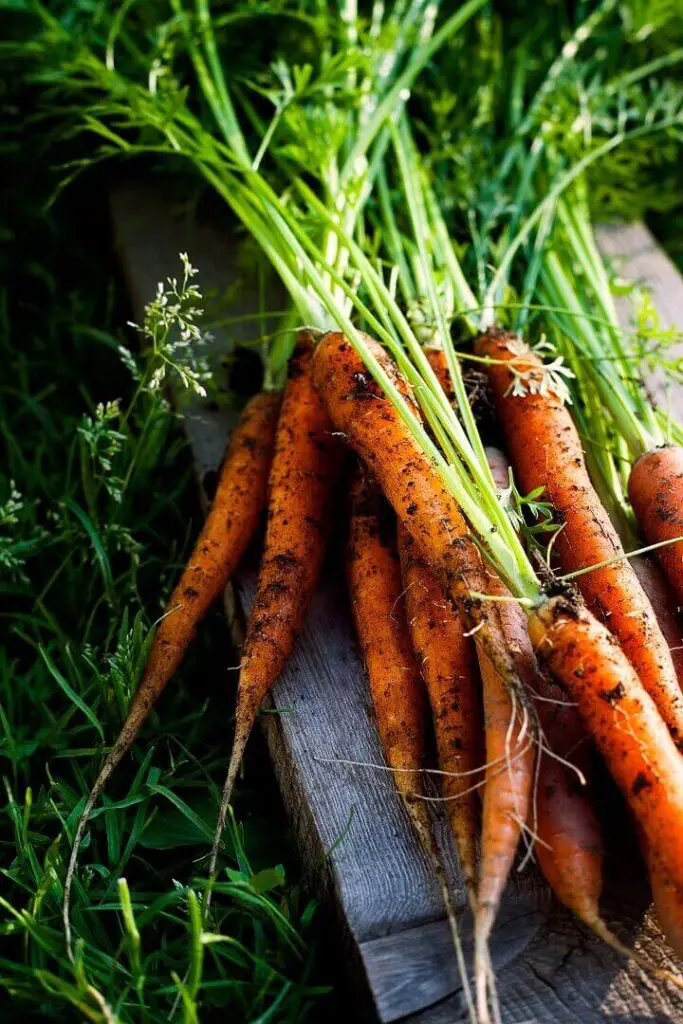
Thanks to their main growth that happens underneath the soil, root crops are big fans of shaded areas.
17. Beets
You either love or hate beets; there really is no in-between. Beets are another shade-loving vegetable that produce a beautiful red bulb with chard-like leaves.
Harvest beets when you can see about half of the root above the soil line. Be sure to use the greens on top of the plant as well in salads and soups as well.
18. Carrots
There is nothing quite as satisfying and surprising as pulling a large carrot out of the garden. It almost seems like magic!
Carrots enjoy loosely packed soil where they can grow without the chance of getting blocked by roots, rocks, or hardened clay. Plant carrots in partially shaded areas and pull them once you spot that beautiful orange color pop out of the top of the soil.
19. Potatoes
A staple root crop, potatoes can adapt to partial shade, although they might take a bit longer to mature than those grown in full sun. They prefer cool soil, making them suitable for early spring or late fall planting in shaded areas.
Use a hilling method to cover the growing tubers with soil or straw to prevent them from turning green. Harvest once the foliage begins to die back, revealing a bounty of potatoes varying in size and color, depending on the variety planted.
20. Radishes
Known for their easy growing ability, radishes are often the common choice of science experiments and first-time gardeners. Radishes grow relatively quickly, and you can see progress in just a few days after planting.
Since they grow in the soil, radishes enjoy shadier parts of the garden and thrive in early spring and late fall temperatures. Plant radishes in soil that doesn’t get too soggy so that rotting isn’t an issue.
It is important to take full advantage of cooler weather when it comes to growing a variety of food in the garden. All of these vegetables that grow in the shade enjoy the early spring and fall temperatures and are great to add to your table. Harvest them twice a year on the homestead to stock up your food pantry.
Like this post? Don't Forget to Pin It On Pinterest!
You May Also Like:

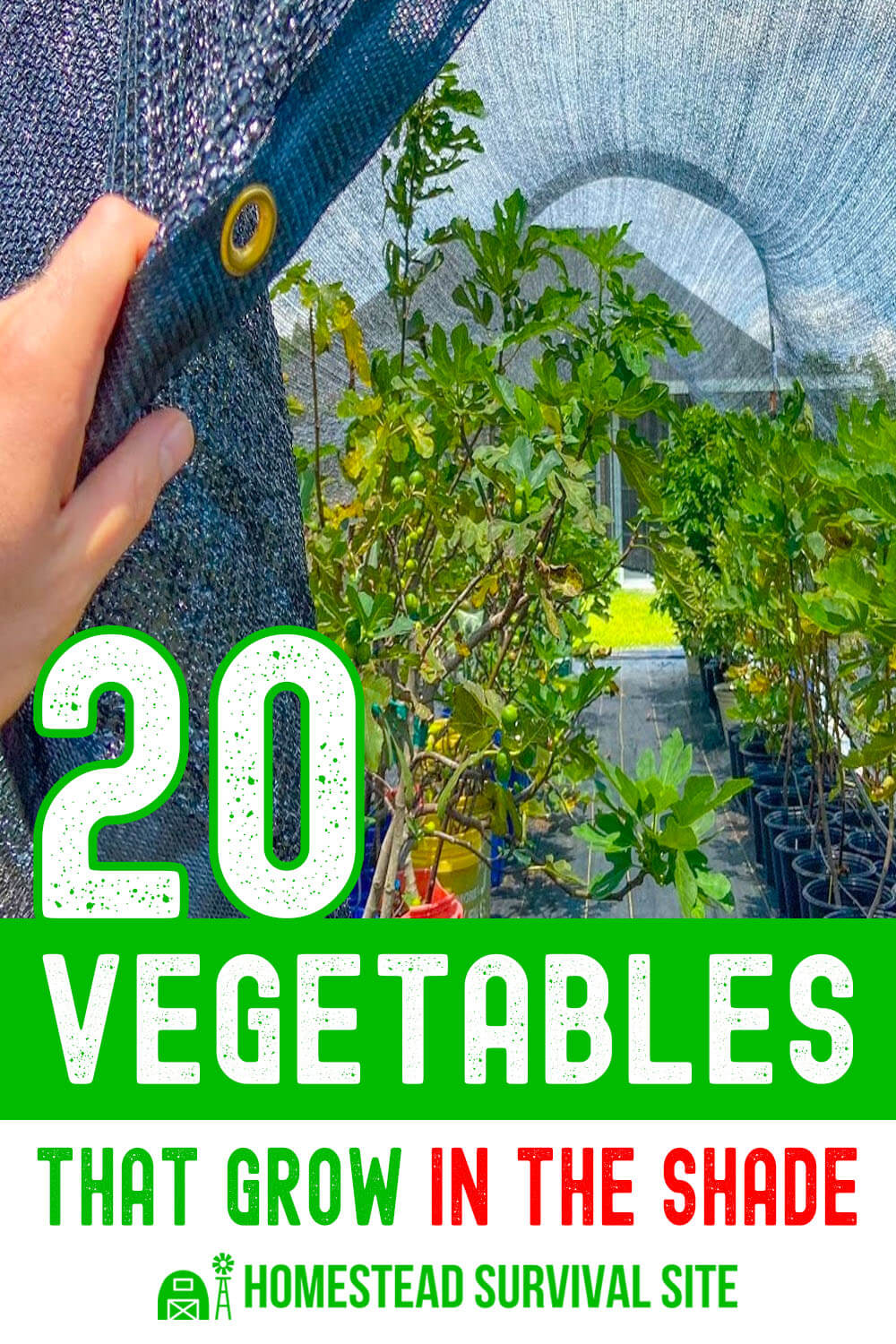


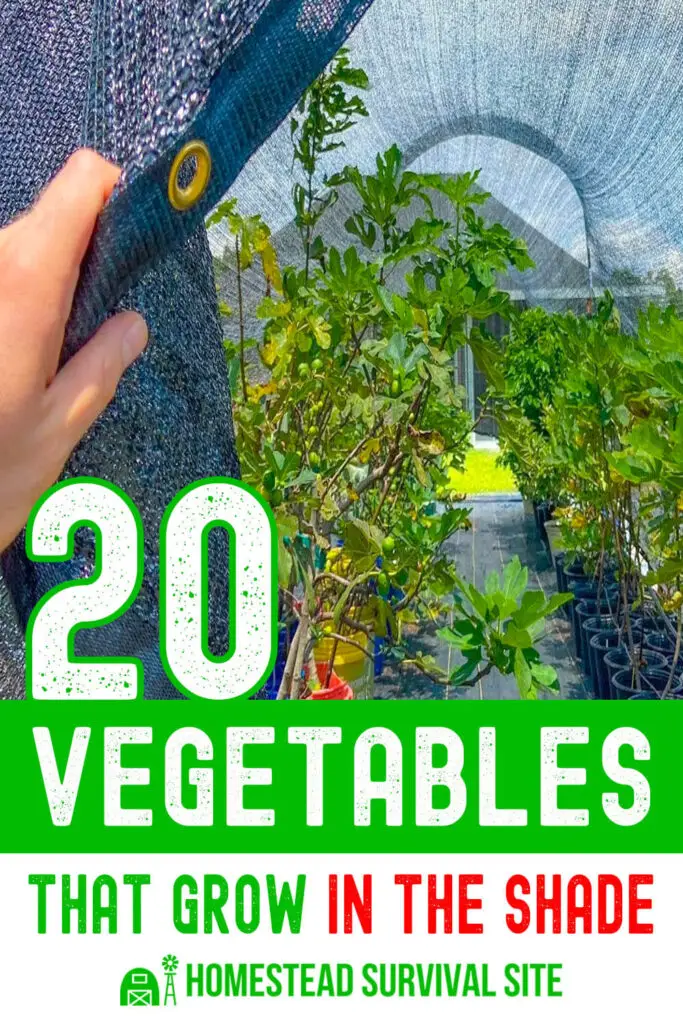


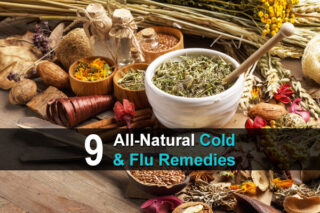
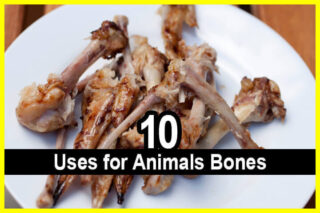



If you want white asparagus they must be grown in the shade.
I like your website, very useful – thank you.
But, what is with these stupid ”click-bank” videos? I can’t stand them. I think over the years I’ve watched 1 or 2 to the end. They are as pointless as a politician. Even the text version.
Sorry, but what really is the point? For a good long stretch, Whenever I saw “HOMESTEAD SURVIVAL SITE” pop-up in an e-mail, it was an instant ‘DELETE’ – because of those stupid click-bank videos. It might be revenue, but to what end? Worth losing views over?
Double edge sword. . .
I get it, but they’re an effective way to generate revenue, and the books they sell are genuinely good. Just don’t click on them if you’re not interested.